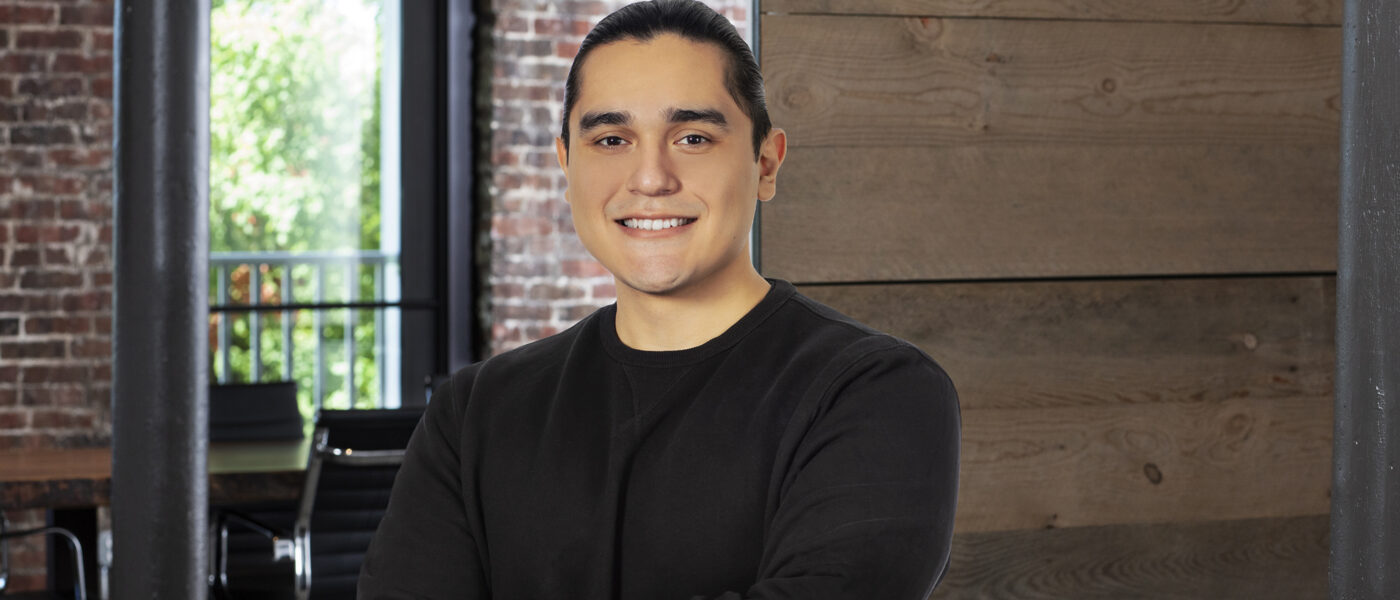Where are you from, originally?
I’m from Kendallville, a small town about 30 minutes north of Fort Wayne. For the most part, though, I grew up in Knob Noster, Mo. That’s an even smaller town, and I’ve only come across one person who has heard of it—a barber in Muncie. He used to be a police officer on the Air Force Base in Knob Noster, and when he heard me say where I was from, he about lost his mind. It’s such a small world.
What drew you to architecture and design?
When I was younger, we used to visit my parents’ hometowns in Mexico. Each of their hometowns had a biggish cathedral, and I was fascinated by them. I was always asking my dad, “How were these built?” Cathedral architecture almost doesn’t feel real because that kind of space puts you to scale. That style interested me and got me learning about buildings and the profession. So, in high school, I hunkered down and focused on electives that were architecture-based. I took high-level math classes, vocational classes for CAD drafting, and eventually found my way to Ball State.
This probably isn’t your first internship, then.
No, I’ve had a few internships, including one in high school and one my junior year of college. Both of those were for general contractors. My previous internship was for a small architecture firm downtown. It was nice because I’ve always wanted to work downtown. Curran is a change of pace because it’s in the Lawrence area, which is quieter. I decided to come to Curran because I wanted the opportunity to branch out, to try things out, before I finish college.
You said you like being downtown. What else do you like about downtown Indy, or about cities in general?
What I like about cities is that there’s always something to do. I’m the type of person who always has to be doing something. It’s nice to go downtown and explore, get a change of scenery. But I grew up in a small down, so crowds can get overwhelming at times. Exploring the woods and the outdoors can be just as fun.
Going back to what you said about cathedrals. Are you still drawn to them?
I think my bucket list project would be a cathedral or a church of some sort. I think it would be cool to design one, because there’s so much you can do. I’ve always been obsessed with designing something on a grand scale, too—like a stadium for the World Cup.
It sounds like you want to work on a project that is not only important to you, but important to others, too.
When I was a kid, I thought I’d be a professional athlete and play in a World Cup someday. Everyone has those dreams as a kid. Now, I have the opportunity to try and get to a point where I can design a stadium for people to play in. And those stadiums are different from regular American football stadiums. “Regular” stadiums seat 60,000, while the bigger ones seat 100,000.
What do you think the industry can do to better itself?
We shouldn’t be afraid to push boundaries. We shouldn’t get stuck doing “the norm”—what we’re used to and comfortable with. I feel like every project is a one-on-one solution to a client’s problems, so you can push boundaries in that sense—tailor a space to them.
With that said, what does good design mean to you?
Good design should help the user in one way or another. Ideally, it should leave a positive impact on the user.
